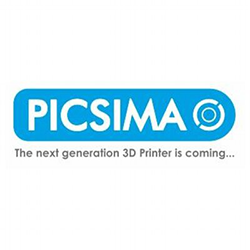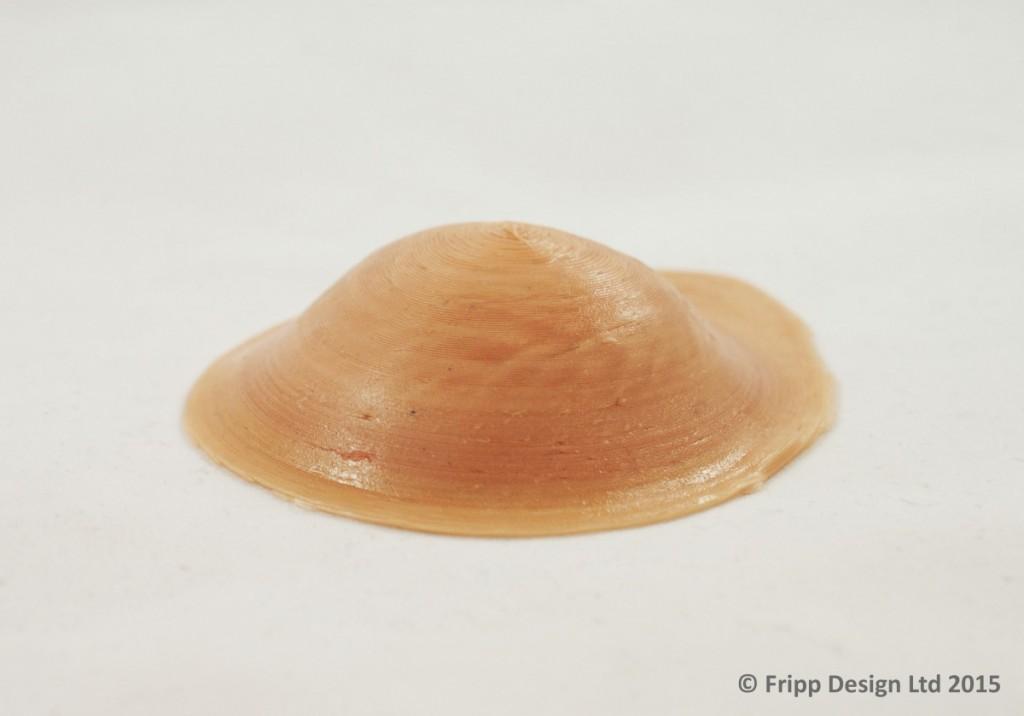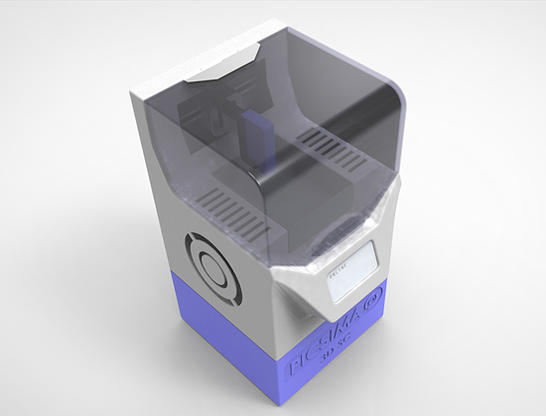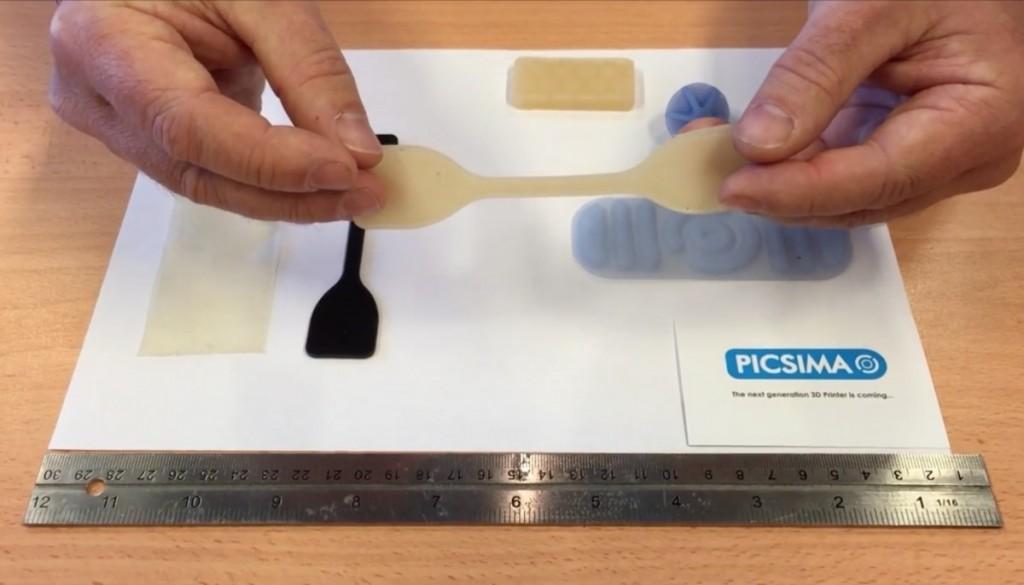Picsima Technology 3D Prints Directly with Silicone, May Completely Transform the Breast Implant Industry
 We live in a world where women are under an incredible amount of pressure, much of it self-imposed, to look like the model on the cover of Sports Illustrated or to emulate the herd of leggy starlets gliding down one televised red carpet after another. That’s a lot of pressure even in a healthy atmosphere, so when coupled with surviving breast cancer and reconstructive surgery, women need every bit of help they can get in order to start feeling better, looking better–and fast.
We live in a world where women are under an incredible amount of pressure, much of it self-imposed, to look like the model on the cover of Sports Illustrated or to emulate the herd of leggy starlets gliding down one televised red carpet after another. That’s a lot of pressure even in a healthy atmosphere, so when coupled with surviving breast cancer and reconstructive surgery, women need every bit of help they can get in order to start feeling better, looking better–and fast.
It’s up to each woman to decide on what type of breast implants she thinks would work for her. Some choose not to augment their breasts at all after mastectomy, while others spend enormous amounts of time weighing out the common question and debate of silicone versus saline. The desired end result is that the patient feels good about herself and her decision.
 As 3D printing enters the breast implant arena, many debates and issues may be eliminated altogether–as the benefits increase exponentially. A glimpse of this was seen at the 3D Printshow London this week as Picsima samples of 3D printed implants were being displayed.
As 3D printing enters the breast implant arena, many debates and issues may be eliminated altogether–as the benefits increase exponentially. A glimpse of this was seen at the 3D Printshow London this week as Picsima samples of 3D printed implants were being displayed.
Fripp Design Research, headquartered in the UK, has rapidly been making strides in 3D printing silicone breast implants. Their new technology, Picsima, represents an incredible breakthrough, as it allows 3D printing with silicone. A unique product, more specifically known as Room Temperature Vulcanising (RTV) medical grade silicone, the material is still in development–as is Picsima. Both the material and 3D printing technology look extremely promising for the future, with the potential to make everyone happier all around–from patients to surgeons.
Currently, after undergoing a mastectomy, the patient has implants inserted in an arduous process, while still under anesthesia. With the advent of 3D scanning, a technology already commonly being used, surgeons are easily able to obtain the image of the breast, which could feasibly be replicated in 3D print efficiently and with better results–streamlining the entire process.
“For some time now we have been asked about the feasibility of 3D printing breast implants,” Tom Fripp, one of the founders and inventors of Picsima, said. “Currently the choices of silicone breast implants for women, having to undergo reconstructive surgery, is very limited. This is not good for women for a number of reasons, they have to spend a relatively long time in surgery under anaesthetic because of the time the surgeon needs to do the reconstruction and the resultant reconstruction often does not reflect the desired look a women wants. We wanted to explore how a custom 3D printed silicone implant could improve this situation.”
 Because Picsima is able to 3D print without support materials, it lends itself to an on-demand, seamless process for both the surgeon and the patient, as surgeons could use the scan to make a 3D printed implant right on the spot with the RTV silicone. Not only would patients have to spend less time under anesthesia in the operating room, but they would also be guaranteed a personal fit in terms of their implant, rather than an ill-fitting, one-size-fits-many implant that magnifies the pain involved in the overall process of having breasts removed, healing, and the general trauma overall.
Because Picsima is able to 3D print without support materials, it lends itself to an on-demand, seamless process for both the surgeon and the patient, as surgeons could use the scan to make a 3D printed implant right on the spot with the RTV silicone. Not only would patients have to spend less time under anesthesia in the operating room, but they would also be guaranteed a personal fit in terms of their implant, rather than an ill-fitting, one-size-fits-many implant that magnifies the pain involved in the overall process of having breasts removed, healing, and the general trauma overall.
Having a natural look and achieving that easily is the optimal goal, because patients simply don’t need another issue to worry about. With that said, preferences vary between individuals, and that’s where the benefits of 3D printing technology shine brightly, allowing patients to have a custom fit–as well as an easier process overall for fitting.
“This is still in development, as is Picsima,” stressed Fripp, “but this is a significant step forward because Picsima is the only polymer based 3D printing technology using materials already approved for medical use.”
Picsima began as a budding idea after an industrial challenge in 2009, as Tom Fripp and Steve Roberts, founders of Fripp Design Research, were faced with the question of whether they could produce color-matching soft tissue prostheses via 3D printing. After extensive research and development, they were indeed able to 3D print soft tissue facial prostheses.
Not long after that, they decided to pursue the pairing of 3D printing and silicone, resulting in Picsima, which is awaiting final patent application approval. Picsima is technically considered a project independent of Fripp Design Research and one would assume that this stunning breakthrough technology is going to be a star in its own right, stealing most of the attention in the room.
Do you think this is a viable alternative to the traditional silicone breast implant? Tell us your thoughts in the Picsima 3D Printed Breast Implant forum thread over at 3DPB.com.
[Source: Disruptive Magazine]
Subscribe to Our Email Newsletter
Stay up-to-date on all the latest news from the 3D printing industry and receive information and offers from third party vendors.
Print Services
You May Also Like
New Business: Temporary, Migratory, & Modular 3D Printed Architecture
If we look at potentially emerging 3D printing businesses, then architecture has not been fully explored. Yes, there is a lot of house 3D printing going on worldwide. From deployable...
3D Printing News Briefs, April 19, 2025: Material Extrusion Standard, Metal Powder, & More
In today’s 3D Printing News Briefs, we’re covering a proposed standard for material extrusion, before moving on to business and metal powder. We’ll end with a commercial store’s robotic 3D...
Japan Unveils World’s First 3D Printed Train Station
Japan is now home to what we believe is the world’s first train station built with 3D printing technology. Located in Arida City, just south of Osaka, the new Hatsushima...
restor3d Raises $38M to Expand 3D Printed Orthopedic Implants
Backed by $38 million in new funding, restor3d is pushing ahead with the launch of four personalized implant lines, set to roll out in 2025 and 2026. This latest venture...


























